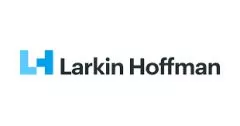The Patient Protection and Affordable Care Act, in addition to extending health care to millions of Americans who currently are uninsured and introducing sweeping changes into the nation's health care delivery system, contains many provisions that will directly impact nearly all U.S. employers. Here is a quick summary of several provisions that should be of interest to all employers. The law, also referred to as the Health Care Reform Act, and which is designated as Pub. Law No. 111 148, was signed by President Obama on March 23, 2010. We will report in future installments on other aspects of the law.
Provisions Taking Effect in 2010 – Market Reforms
While most of the provisions of the Health Care Reform Act will be phased in during the next several years, and some provisions are delayed until 2014, a number of key changes will take effect six months after final enactment – September 23, 2010 – including:
- Non-dependent adult children must be permitted to remain on a parent's health plan until age 27.
- Insurers cannot deny coverage to persons with pre-existing conditions.
- Insurers cannot impose lifetime maximums on the dollar value of coverage, and restrictive annual limits are curtailed.
- All new group and individual plans must provide first-dollar coverage for some preventive services and immunizations.
These provisions apply to all Americans and are not tied to employer-sponsored or employer–provided plans.
Amendments to the Fair Labor Standards Act
Congress added several provisions to the Fair Labor Standards Act of 1938 (FLSA). These include the automatic enrollment in healthcare plans provision and notification to employees of the availability of healthcare coverage through self-called "Exchanges." Certain provisions apply to "large employers" (those having 50 or more employees); some flexibility based on "undue hardship" are provided for "small employers" (those having 25 or fewer employees and annual wages not in excess of $50,000).
The automatic enrollment provision will be found in new Section 218a of the FLSA and will take effect in 2014. This provision will apply to employers having 200 or more employees. Enrollment may be subject to a waiting period, but the Health Care Reform Act will limit waiting periods to no more than 90 days in 2014.
Beginning on March 1, 2013, employers must notify employees and new hires of the availability of individual insurance through the Exchanges created under the Health Care Reform Act, of the employee's eligibility for a premium credit, and of the loss of employer contribution to the employer-sponsored health plan if the employee elects to obtain coverage through the Exchange. The Department of Labor is expected to promulgate regulations implementing these provisions under new section 218b of the FLSA. It should be noted that the Exchanges are not required to be in place until 2014.
New FLSA Section 218c is intended to protect certain employees against retaliation or discrimination with respect "to his or her compensation, terms, conditions, or other privileges of employment because the employee has received a premium tax credit or healthcare subsidy." It is unclear at this time how many employees this anti-retaliation provision will reach, but it does add another layer of regulation for employers.
Finally, Congress added to FLSA Section 207 a provision that requires employers to provide reasonable break times and a suitable place for breast-feeding mother's to express milk. Small employers, those with fewer than 50 employees, will not be subject to this requirement if compliance would create an "undue hardship." Because most states and the District of Columbia already have in place legislation that requires employers to provide a suitable place and break times for nursing mothers to express milk, this provision of the FLSA seems unlikely to cause any major changes in U.S. employers' operations. In placing this provision in Section 207, which is the overtime compensation provision of the FLSA, however, Congress may have inadvertently excluded exempt employees from this provision. Section 213 of the FLSA excludes from Section 207 employees who qualify for the so-called like-color exemptions and a host of other long-standing exemptions under the FLSA. It is possible that Congress or the Department of Labor could correct this if it is an error.
Smaller employers will be eligible for a tax credit later this year. The Internal Revenue Service estimates that some 4 million small businesses and tax exempt employers may qualify to receive up to a 35 percent tax credit for healthcare premiums paid by the employer. Eligible exempt organizations could receive a tax credit of up to 25 percent of premiums paid by them. These tax credits will take affect beginning in 2010 and continue through 2013. Employers should expect to receive in the mail a postcard from the IRS later this year. The text of the postcard notice is available at http://www.irs.gov/pub/irs-pdf/n1397.pdf. A frequently asked question (FAQ) sheet published by the IRS is available at http://www.irs.gov/newsroom/article/0,,id=220839,00.html.
Beginning in 2010, all employers must report in the W-2 forms they issue the value of health benefits provided to their employees. Many employers already provide this information to their employees in annual reporting statements for internal purposes. Now, the information will be required to be included in the W-2 and reported to the government.
Many other provisions that have received attention in the media will take effect in 2011 and later years. These provisions include various tax provisions, including new annual limits on contributions to HSAs and FSAs, a tax on so-called "Cadillac health plans," and a penalty to be imposed on employers who do not provide health coverage to their employees. We will report on these matters in additional alerts.
The content of this article is intended to provide a general guide to the subject matter. Specialist advice should be sought about your specific circumstances.

